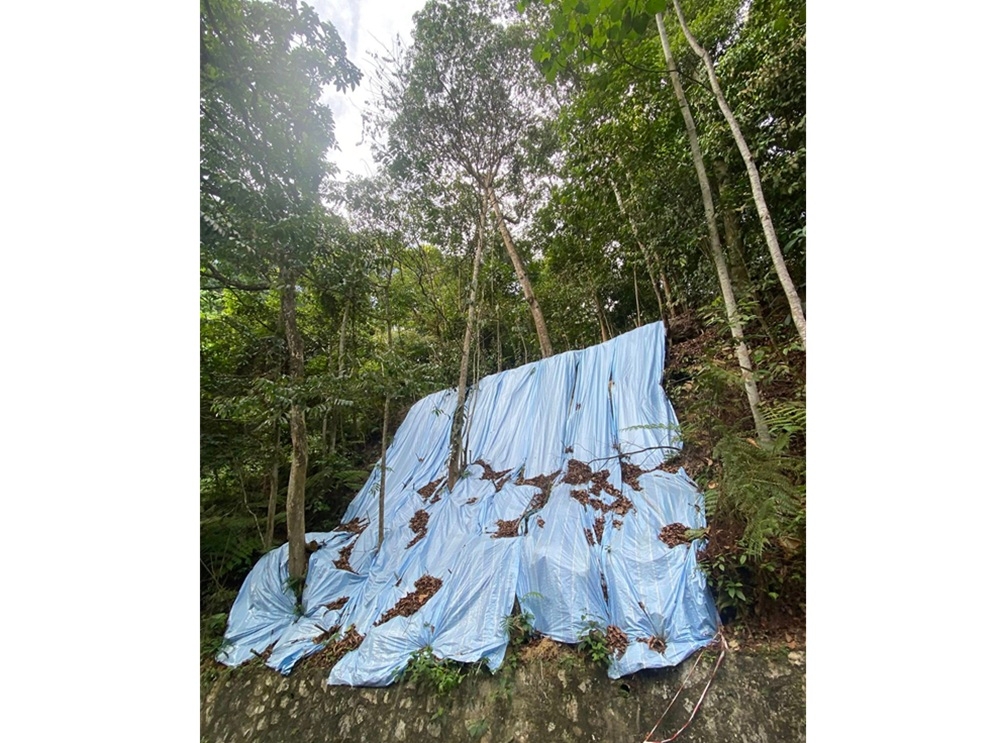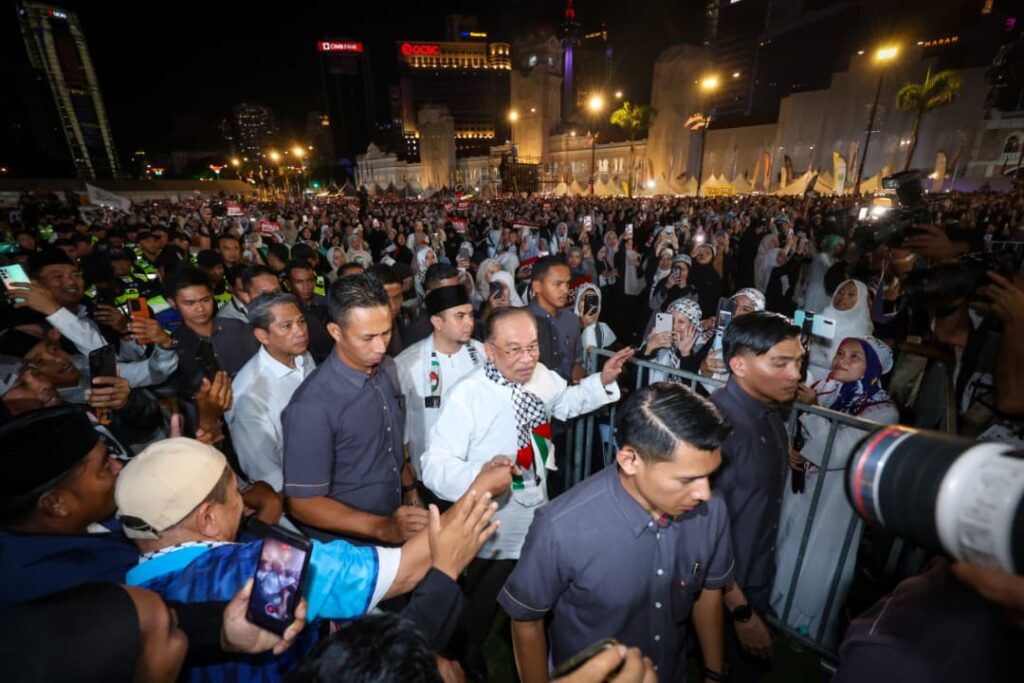AUGUST 24 — The recent clear felling of trees over six acres of Bukit Kiara Federal Park (TPBK) for the National Landscape Department (JLN)’s new office and “welcome centre” has somewhat polarised Taman Tun Dr Ismail (TTDI) residents and park users mostly from across KL and PJ.
Residents of the Jalan Abang Haji Openg (JAHO) neighbourhood are a major opinion bloc.
They include parents who endure park-goer traffic snarls when sending their kids to school but also retirees enjoying easy foot access to the park at off-peak times of their choosing.

A view of the recent felling of trees at the Bukit Kiara Federal Park. — Picture via Facebook/Friends of Bukit Kiara
The active members of the Friends of Bukit Kiara (FoBK), whose concerns for biodiversity and ecosystem conservation are shaped by years of vibrant discourse, also bring strong and diverse perspectives to the table.
The one thing all can probably agree on is that the stakeholder engagement has been dismal.
This was in fact the second major capital project intervention commenced on TPBK within the past 12 months.
The dredging/de-silting of the Lembah Kiara lake to be followed by upgrading of waterfront facilities has been plodding on and appears well behind schedule.
However, the lead-up to this earlier project saw better public engagement, unlike the recent mobilisation which caught most people by surprise.
Thanks to this engagement a portion of the “family recreation zone” remains open for public use during the dredging works.
The lake dredging is being managed by the Department of Irrigation and Drainage (JPS). Under government protocols, JLN is not considered a qualified superintending agency for such work.
Similarly for the JLN office project, it is the Public Works Department (JKR) in charge.
In the clear felling of those six acres, one may detect a shade of how things are usually done for a “road building project” i.e. JKR’s bread and butter.
Could JLN have better exercised their influence on the work methods for a more environmentally-sensible project implementation?
I believe they could (and should) have done that. It has to start with better inter-departmental co-ordination and a shared commitment to be transparent with the public.
On that latter score, JLN is probably among the more bought-in government agencies, but it cannot achieve much in isolation.
No black or white answers
In demanding transparency and accountability from government agencies, civil society must also ask itself what it can do to better understand the government machinery and how to leverage its entry points by constructively engaging, building trust and collaborating in ways that could help a culture change permeate across the government system.
FoBK has learned much over the years but there is still much more to learn. It is the hard(er) thing to do. Sustainable change for the better always comes through the more challenging pathways.
Many of the views expressed in the media and on social channels do merit deeper consideration.
For many questions there are no black or white answers — they involve various ideas and perspectives and require a nuanced approach, respecting the greater rights of those more directly affected.
Along this vein, here are a few perspectives to consider:
1. Conserving and integrating selected trees into the project layout should have been possible in the design stage. The Taman Tugu project did exactly that with ca.1,000 “high value” trees.
There, aged rubber trees did not predominate. But what is more important is that JLN should constantly seek ideas and best practices from elsewhere.
2. NParks Singapore and The Royal Parks (UK), both having a national remit as does our JLN, have their respective headquarters within the “gazetted grounds” of Botanic Gardens and Hyde
Park respectively. A deep-dive could reveal further rationales and comparisons. The merits of JLN accommodating its Federal Parks division inside TPBK cannot be judged in a vacuum.
3. The siting of government offices (and even amenities of restricted commercial nature) within gazetted grounds is not uncommon at all, even where the protection status is “higher”. Eg. Bukit
Nanas Eco-Forest Park which is a Forest Reserve has within it various offices/amenities (other than KL Tower). The privatised Mutiara Resort at Kuala Tahan is entirely inside Taman Negara.
4. Rhetoric (like greenwash) can also be the bane of nature conservation. Civil society’s narratives against greenwashing and its material/political goals must remain grounded in reality in order to be credible. Various views have been aired on how TPBK should be sustainably curated, how it should align with a lower carbon future etc.
By and large these are appropriate as holistic long term visions. But it must also be borne in mind that the issue at hand is about 1.5 per cent of TPBK’s 400 acres, and that audience-building pathways to conservation are also important.
5. Focusing on a “wound” can make us lose sight of the greater “cancer” i.e. the many trespasses around the Klang Valley that are destroying our urban ecology. Would solidarity with related causes outside of our own echo chamber bring greater benefits in the long run?
Historical perspectives
JAHO was the “Phase One” of TTDI built during the early/mid 1970s while the government was in the process of acquiring 1,500 acres of adjacent rubber estate for a National Botanical Gardens.
JAHO’s “interface” to the park is its eponymous main local street, which is presently provided with only a ~14m reserve width—while the six latter phases of TTDI each got their 66ft (20m) main street reserve as provided for in the master plan.
This jarring non-conformity was studiously avoided in a recent Traffic Impact Assessment (TIA) submitted by the proponent of a commercial (service apartments) project along JAHO.
Current property lines and building setbacks suggest that a 20m reserve width—including drains, sidewalks, greenery etc—is still capable of being reclaimed for JAHO.
A lower-carbon future to be planned for
Among the issues raised was JLN’s perceived “emphasis” on parking bays, allegedly encouraging ever increasing visitation by car. It therefore bears clarification that a 20m road reserve should not necessarily be about increasing car carrying capacity.
Planning is about recognising realities of the present while charting a pathway to the future. In spatial planning, reserves are for preserving future options, eg. for optimising accessibility to TBPK in step with mass mobility transitions over the coming years and decades.
A TPBK visit for non-TTDI residents could be reimagined as a train ride, alighting at the MRT station followed by a walk (or cycle) through shady tree-lined avenues.
Advancements in low-carbon “people moving technologies” could well enable some feasible alternative to last mile walking/cycling.
JLN’s car park space could be scaled/repurposed as things evolve.
Such visions could feature in a sustainability roadmap founded upon community-driven consensus-building and support from our Member of Parliament, underpinning JAHO’s future harmonious co-existence with the federal park which serves a purpose greater than TTDI.
* Peter Leong is a volunteer with Selamatkan Kuala Lumpur (SKL), public policy adviser to the Kuala Lumpur Residents Action for Sustainable Development Association (KLRA+SD) and a former Secretary of the Friends of Bukit Kiara (FoBK).
** This is the personal opinion of the writer or publication and does not necessarily represent the views of Malay Mail.






